Board Business
C’mon in, the water’s fine. Really.
July 25, 2012

Dancers splash in the Arthur J. Will fountain's new "membrane pool" during Thursday's dedication ceremony.
It’s big, it’s wet and it’s already making a big splash as the first segment of Los Angeles’ Grand Park opened this week.
The 6,200-square-foot pool in front of the restored Arthur J. Will Memorial Fountain has only a quarter-inch of water, but it’s likely to be a huge crowd magnet, says Jim Garland, president of Fluidity Design Consultants, which oversaw the fountain’s restoration and expansion.
“It’s going to be awesome,” says Garland. “There’s a similar pool around the Millennium Park Fountain in Chicago, and kids roll around in it, and people just love it, and it’s probably the most popular fountain today in the United States.”
But under the sleek, nonslip surface and its inviting jets of water, an elaborate system of machinery and maintenance workers will be hustling around the clock to keep that expanse—technically known as a “membrane pool”—clean. The pool’s filtration system was kept separate from the one used for the fountain itself, Garland says, because health codes set a higher standard of cleanliness for interactive water elements.
Every drop will circulate every half-hour through an underground filtration and disinfection system that will kill bacteria with ultraviolet light and chlorinate the water. Security guards will patrol to ensure that no one abuses the pool area or mistakes it for a bathtub. And the crews that monitor the fountain at the Dorothy Chandler Pavilion will manually test for cleanliness at least three times daily.

Barefoot in the park: Dignitaries like Eli Broad are among the first to take the plunge after Thursday's ribbon-cutting.
“It’s about a 10 minute test—we just take a water sample and drop in a tablet,” says Keith McTague, director of building services and chief engineer at the Music Center. “We’re mainly doing it as a check and balance on the filtration system, which is automatic, and so that the readings are documented. But if we have to do it more often, we will.”
These safeguards are crucial because, while the historic Will Memorial Fountain was designed to keep people out of its waters, the adjacent membrane pool was conceived as a way to entice kids and grown-ups alike into getting wet.
“Nobody was sure there would be money for an interactive area like that,” Garland says. “But…we all fought to keep it in.”
Much of the inspection and testing of the system will rest with the Department of Public Health environmental health unit which, among other duties, acts as the county’s “fountain police.”
Chief Environmental Health Specialist Bernard Franklin says the Grand Park membrane pool is different from the roughly two dozen other interactive fountains throughout the county. Most of those, he says, are “splash pads” in which water spurts from a dry deck surface—not like Grand Park, where jets are placed in an ever-present layer of water.
In fact, Franklin says, the Grand Park pool will be the last of its kind in the county after September, when revisions to the California Building Code and the California Code of Regulations will prohibit pools of standing water in fountains that encourage public interaction with the water.
Franklin, who helped author the new rules, says that while the Grand Park pool will be well maintained, others with a lesser design or oversight could generate potentially unhealthy conditions. “Pools like these can be big collectors if you’re not careful,” he says. “Dirt gets in them, pigeons and ducks come around them, people try to use them in ways they aren’t supposed to.”
To that end, camera monitors and round-the-clock security will be in place to discourage mischief and enforce rules that will, among other things, ban camping and skateboarding in the park.
The results promise to be well worth it.
As the designer Garland puts it: “At night, you’ve never seen anything like it. It’s going to be magical.”
Posted 7/26/12
Here’s a bright idea for the park
July 12, 2012
When Grand Park opens in the downtown Civic Center later this month, it won’t just be the show-stopping fountain and collection of internationally-inspired garden plantings that will have eyes popping—and tongues wagging.
Check out those benches.
Perhaps not since “festive federalism” stamped its exuberant, mid-‘80s color palette on the 1984 Olympics has such a comment-worthy color explosion rolled into L.A.
While most of the park itself remains out of view behind temporary chain-link fencing swathed in green mesh, a pair of its vibrantly-hued benches recently popped up outside the 2nd floor entrance to the Hall of Administration, where they’re visible to everyone passing by on the busy pedestrian corridor to and from Starbucks.
And everyone, it seems, has an opinion.
“Awesome. It’s fun. Different,” said Adrian Taghdiri, who’s interning in the County Counsel’s office.
“They’re cute, but it’s a little bright,” said Frances Espinosa of the Assessor’s Office.
“Beautiful!” said Zella Scott of the Treasurer-Tax Collector’s office.
“A little bit too loud for me. It’s like something out of the 1960s,” said Jesse (Jay) Luna of Public Health.
“Generally, with pink you think of breast cancer awareness. It’s different, I guess,” said MacKenzie Smith of the D.A.’s office.
“Will the boys not sit at the girls’ benches?” wondered Renee Rose, also of the D.A.’s office. “You’ll have to be very in touch with your masculine side not to be intimidated.”
“I like them, especially on a bright, warm, sunny day like today,” said attorney Ludlow Creary, passing through after an appearance in Federal Court. “They’re very inviting. I think it’s very L.A., but that’s not a bad thing. Something like this works in L.A.”
So what color are those benches, anyway? Officially termed magenta, the after-lunch crowd passing by this week offered its own interpretations, ranging from “kind of like a fuchsia, but with a little deep purple in it” to “hot pink!”
Technically a variation on the color known as Pantone 219C, the hue was toned down and “richened” by the park’s designer, Rios Clementi Hale Studios, and by JANUS et Cie, the firm hired to produce the custom-designed furniture that will adorn the 12-acre expanse. (In its original form, the color is also associated with Pantone Barbie and is a dead-ringer for “Lights” in Essie’s “Poppy-razzi” nail polish line. In other words, Elle Woods would love it.)
Even though it exudes an unmistakable sense of Southern California fun, the color choice has a far-from-frivolous role. It’s a key factor in establishing the new park’s identity, taking inspiration from a variety of influences around the world, including the green seating at Paris’ Tuileries Gardens.
“We obviously wanted to really create something iconic with the furniture,” said Tony Paradowski of Rios Clementi Hale. “Our idea was to have a floral quality throughout the year.” No matter what plants were in season, “the furniture would always be this kind of bloom-like color sensation throughout the garden.”
In addition to 26 freestanding benches and 41 wall-mounted benches, the park will offer furnishings that can be moved around by patrons: 120 café tables, 240 café chairs and 40 lounge chairs on the lawn.
Using unsecured furniture is “definitely a different model for Los Angeles, but in other cities this has been around for quite a while,” Paradowski said, citing New York’s Bryant Park and Hyde Park in London, where folding fabric chairs are rented out in nice weather. Grand Park’s around-the-clock security should help keep the chairs from walking away, as will a plan to tether furnishings together after-hours, he said.
As for the color, Paradowski thinks most people will come to love it, although he acknowledges that the benches “definitely ask for opinions.”
“We worked with the construction crew out there, and a lot of them said, ‘Wow, why’d you pick pink for the chairs?’ I think a lot of them are still scratching their heads.”
Posted 7/12/12
Park it anywhere, but no tents, please
July 10, 2012
Grand Park promises to be a great place for basking, splashing and even dog-walking in the heart of L.A.’s Civic Center. But don’t count on pitching your tent there.
As the park prepares for the grand opening of its first two phases later this month, a push is on to protect the vibrant urban gathering place that’s expected to be a crowd-magnet in park-hungry downtown.
The Board of Supervisors on Tuesday voted to amend the County Code to make it clear that any kind of camping—not just overnight sleeping—is prohibited in county parks under most circumstances.
Not that recreational lounging is taboo. The ordinance makes it clear that it’s fine to unfurl an umbrella, canopy, sunshade, bedroll or sleeping bag on park grounds—just as long as those accoutrements aren’t “used for lodging or living accommodation.”
County officials said the ordinance isn’t aimed at any particular group or activity. And they note that it applies to all county parks, not just the new Grand Park, which is situated near Los Angeles City Hall, where long-running Occupy L.A. encampments caused extensive lawn damage last year. City officials responded by recently enacting a new, widespread ban on tents in city parks.
As it approved the county camping measure, the Board of Supervisors also OK’d expanding sections of the County Code dealing with disturbances and aggressive solicitation in county parks—including a new prohibition barring solicitation within 15 feet of an automated teller machine. (A Bank of America ATM is located near the Starbucks in Grand Park.)
The actions approved Tuesday are part of an ordinance, set to come before the board for final approval on July 17, that places the park under management of the county’s Chief Executive Office.
Dawn McDivitt, who is overseeing the project for the CEO’s office, said that in addition to the ordinance, rules are now being drawn up for the new park—including regulations on skateboarding, potentially a big temptation on the signature, ADA-accessible ramps that will connect the park’s various levels.
She said the park, which will be equipped with security cameras, will receive round-the-clock protection from the Sheriff’s Department and private guards.
“We’re just confident we can have a safe and secure atmosphere that welcomes everybody,” McDivitt said.
Posted 7/10/12
A July debut for L.A.’s Grand Park
June 27, 2012
After two years of construction, the first segment of Los Angeles’ new Grand Park is set to open in the final days of July, a milestone in the revitalization of downtown that will be celebrated with a nationally-promoted dance celebration.
The first two blocks of the park—from Grand Avenue to Hill Street—will be dedicated by civic leaders on Thursday, July 26, near the spectacularly restored Arthur J. Will Memorial Fountain. But the big coming out party is scheduled for Saturday, July 28, with a public inaugural coinciding with National Dance Day, an event founded by producer Nigel Lythgoe, who co-created the hit TV show “So You Think You Can Dance.” Tonight, Lythgoe is scheduled to promote the Grand Park dance celebration on his Fox network show.
“The park gives us a lovely setting to encourage all members of the community to get up, move and get healthy at the same time,” Lythgoe said in a statement.
The entertainment will be presented by The Music Center, which was recently selected by the Board of Supervisors to oversee park operations during its first three years. “This event will be a great example of the type of fun, interactive and entertaining activities Grand Park will host for years to come,” said Thor Steingraber, vice president of programming at The Music Center.
Also involved in the opening-weekend events will be The Dizzy Feet Foundation, a non-profit group founded by Lythgoe and other dancers and actors to “support, improve, and increase access to dance education” in the U.S. The entertainment is scheduled to include a performance by Cirque du Soleil. (See full L.A. County announcement here.)
When completed, Grand Park will span four blocks—from Grand Avenue near the Music Center to Spring Street, across from City Hall. The final two blocks of the park are scheduled to open in late summer or early fall. Only in recent days has Grand Park come into full public view as work crews removed the dark sheeting from a warren of chain link fences. Besides the fountain, the park will feature an event lawn, gardens and walking paths.
Posted 6/27/12
Beach chief up for assessor post
June 12, 2012
Santos Kreimann, who has led the county’s Department of Beaches and Harbors since 2009, could become the new temporary head of the controversy-plagued Assessor’s Office under a recommendation made to the Board of Supervisors Tuesday.
Kreimann would take over for Assessor John Noguez, who announced he will be taking a voluntary leave of absence as soon as a temporary successor is in place.
Chief Executive Officer William T Fujioka recommended Kreimann for the position, citing his professional experience, including a stint in the CEO’s real estate division, as well as his managerial acumen.
“I feel that Santos, with his background in real estate and his very strong, to the point of exceptional, management skills, would be an ideal candidate for this assignment,” Fujioka told supervisors Tuesday.
The board is expected to take up Fujioka’s recommendation next week. If supervisors agree that Kreimann is the best choice, he would be appointed by Noguez to run the department in his absence. While the assessor himself must make that appointment, Noguez has said he preferred to stay out of the selection process to “remove any possible concerns” about his involvement.
Noguez’s leave of absence comes as he and members of his staff are being investigated by the District Attorney’s office on allegations of preferential treatment of some property owners. In announcing his decision to go on leave earlier this month, Noguez urged supervisors to designate “a highly qualified person” he could appoint to manage the office in his absence.
In a statement Tuesday afternoon, he asked his staff to support Kreimann while he is on leave, adding: “He will have my full authority to manage and oversee the department.”
If Kreimann moves over to the Assessor’s Office on the temporary assignment, Beaches and Harbors will be run in the interim by its three assistant directors, Fujioka told supervisors.
Kreimann, who said he was surprised to be tapped for the assessor’s post, said it’s unclear how long the assignment might last.
“It could be a year or three months; it could be all the way into 2014,” he said.
Whatever the timetable, he said, it will be important to review policies and procedures and make adjustments, if necessary, to prevent “bad things happening.” Another top priority: lifting employees’ morale.
“They’ve been beat up. And I would imagine they’ve been embarrassed to a certain extent,” Kreimann said. “I think it’s important for anyone who goes in there, whether it’s myself or someone else that goes in, to give them some confidence that they’re doing the right things.”
It’s all about making sure the public can believe in the integrity of the office, he said.
“Ultimately it all translates into making sure that the public trust is regained, and that people have confidence in the employees and the work we do in the assessor’s office.”
Kreimann, 47, a 22-year county veteran, lives with his wife and three daughters in Whittier. For him, the saying “county family” is more than just an expression—he has a brother in the Chief Executive Office and a sister in the department of Human Resources.
And when the “family” needs help, he said, there’s really one way to respond.
“When Bill approached me, I felt that I had to do it to help the county as a whole,” he said. “We’re all one big family.”
Posted 6/12/12
This summer’s “grand” opening
May 29, 2012

This section of Grand Park, featuring the Arthur J. Will fountain and green-roofed Starbucks, will open first.
The newly named Grand Park in downtown Los Angeles edged closer to reality this week, with the selection of the Music Center as operator of the 12-acre site, now scheduled to begin opening in late July or early August.
The park, which until this week had been called Civic Center Park, promises to dramatically reshape a downtown experience that, for decades, has offered little in the way of outdoor recreation or entertainment. When completed, Grand Park will stretch four blocks—from the Music Center to City Hall—and will feature, among other things, an event lawn, gardens, walking paths and spectacularly renovated fountain (see video here).
Project Manager Dawn McDivitt of the county’s Chief Executive Office said the park’s opening will be phased in throughout the summer. The park’s northern end, which includes the Arthur J. Will Memorial Fountain below Grand Avenue, should be opened in roughly two months. McDivitt said the strategy of staggered openings will give the event lawn at the park’s southern end time to take root—and for the county to create excitement around the unveiling of each successive stage.
With the first opening only weeks away, the Board of Supervisors on Tuesday voted unanimously to contract with the Performing Arts Center of Los Angeles—more commonly known as the Music Center—to oversee park operations for the first three years. That includes lining up a diverse slate of musical, theatrical and educational programming.
“We look forward to working with the county to create a vibrant and welcoming park in the center of downtown,” Music Center Chief Executive Officer Stephen D. Rountree said after the board’s vote. He said that no firm programming decisions have been made but that he expects year-round activities ranging from music festivals to farmer’s markets.
The supervisors also voted to change the name to Grand Park. Planners were worried that the phrase “civic center” was not sending a clear message. “We didn’t want it to sound too governmental or too institutional,” McDivitt said. “We wanted the name to reflect the park’s aspirations.”
The park is part of the larger Grand Avenue project, a massive commercial and residential development that has stalled with the faltering economy. The developer was required to provide $54 million upfront toward the park, thus ensuring its completion.
Posted 5/26/12
Assessor hit for faulty forecasts
May 16, 2012
 When it comes to forecasting the rise and fall of home prices, the Los Angeles County Assessor’s Office needs to get its house in order.
When it comes to forecasting the rise and fall of home prices, the Los Angeles County Assessor’s Office needs to get its house in order.
That was the conclusion of a team of consultants hired by the county to investigate how the assessor came to produce two widely different predictions of money that would be generated by this year’s property taxes. In one fell swoop, the amount of growth forecast for property values plunged from $18.6 billion in December to $5.1 billion in April—an unwelcome surprise for financially-strapped local government entities, including the county, that rely on the funds.
An irate Board of Supervisors last month called the disparity shocking and unprecedented, and ordered a top-to-bottom audit of the office run by Assessor John Noguez, who already was under fire for allegedly giving special treatment to certain property owners, an accusation he has denied.
On Tuesday, the first phase of that audit was presented to the supervisors, and it did not paint a flattering portrait of assessor operations.
Consultants from the firm Rosenow Spevack Group found numerous flaws in how the two forecasts were reached—from failing to account for home price volatility at the close of last year to making errors in math. RSG, which was retained by the county’s auditor-controller, concluded that the December forecast of 1.77 percent revenue growth was too high and that the April forecast of .49 percent growth was too low.
Based on more complete information, RSG and the Assessor’s Office now agree that rate of growth in property tax revenue will be closer to 1.14%.
The most significant forecasting error, according to RSG, was the assessor’s failure to recognize, and account for, an unexpected decline in value for hundreds of thousands of parcels in the final quarter of last year. The assessor’s office had based its December forecast on information generated between January and September 2011, when prices were relatively stable, without examining available sales data or economic analyses for the latter part of the year. The result: an overly optimistic forecast, Jim Simon of RSG told the board.
Mistakes were also made in the April forecast, he said, including an overstatement of the estimated drop in the property tax roll because of “a calculation error.”
In a letter accompanying RSG’s report, Auditor-Controller Wendy Watanabe noted that, during the past several years, the assessor’s office has been hit with numerous retirements in key management roles, “which has resulted in significant turnover in the staff who prepare the roll forecasts.” Watanabe’s office is now examining the management of the assessor’s office, including whether it has been hurt by the controversies surrounding Noguez, who, along with other members of his staff, are under investigation by the District Attorney’s public integrity unit.
That a controversy over forecasts could even flare seems unique to Los Angeles government.
According to RSG, it appears that no other assessor in the state is producing multiple forecasts like Los Angeles. For 20 years, the L.A. County assessor has been producing three of them as a way to help the county’s Chief Executive Office prepare the county’s preliminary budget. Under state law, an assessor is only required to produce an annual forecast in May, if asked to do so by a governing body of a taxing agency.
“Their primary function is to be assessors” evaluating properties, Simon said, “not forecasters.”
Still, with the likelihood that multiple forecasts in Los Angeles County will continue, Simon’s team suggested a number of ways for the assessor to increase accuracy. They include: using the most current data available; evaluating properties on a more geographic-specific level, obtaining input from economists and other experts, and providing a range of values in forecasts, instead of settling on a specific number.
Posted 5/16/12
Board orders audit of assessor’s office
April 10, 2012
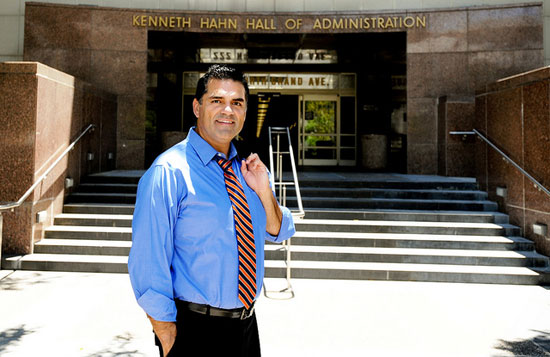
Assessor John R. Noguez blames a surprise drop in property prices for the differences in his forecasts.
Los Angeles County’s assessor came under tough criticism from the Board of Supervisors on Tuesday for producing alarmingly divergent property tax forecasts that could create unexpected headaches for hard-pressed municipalities, school districts and public safety agencies that rely on the funding.
“It’s perplexing, it’s confounding and it’s unprecedented in my time here,” said board Chairman Zev Yaroslavsky, who, with Supervisor Mark Ridley-Thomas, authored a unanimously approved motion ordering an immediate top-to-bottom audit of the assessor’s office.
Assessor John R. Noguez had disclosed to supervisors last week that the county’s 2012-2013 property tax roll would likely generate only a fraction of the net increase he’d forecasted in December, dropping from $18 billion to just $5 billion. On Tuesday, testifying before the board, Noguez blamed the disparity on what he said was a surprising plunge in property values during the final months of last year, with an average 5% tax reduction expected on more than 500,000 parcels.
But Noguez’s explanations, along with those of his chief of staff, seemed only to fuel the supervisors’ concerns about the performance of the assessor’s office, which in recent months has been confronted with allegations that it gave special treatment to certain property owners. Noguez, a 25-year veteran of the assessor’s office who was elected to the top job in 2010, has insisted he’s acted properly and said Tuesday he welcomes a comprehensive review of his office by the county’s auditor-controller.
During the board meeting, Noguez was not asked directly about that controversy. But the tenor of the questioning—and the wording of the audit motion itself—suggested that the supervisors had broader concerns than the revenue forecasts.
“It is imperative that the Board of Supervisors, the governing bodies of other local public agencies and the public have confidence in the Assessor to accurately, efficiently and impartially administer the property assessment process,” Yaroslavsky and Ridley-Thomas wrote in their motion. “The public must be ensured that adequate controls are in place to safeguard the reliability and integrity of the system.”
Although it’s not unusual for variations to exist among property tax forecasts, what made this one so “shocking,” in the words of Supervisor Don Knabe, was that differences between the projected revenue increases were so big—from 1.77% in December to .49% this month. For the county, that represents a potential drop of more than $50 million at a time when the county and other municipalities are hammering out their budgets.
“It’s not simply a matter of numbers but, in fact, real impacts that could adversely affect real human beings,” Ridley-Thomas said.
Chief Executive Officer William T Fujioka, who called the size of the disparities “unprecedented,” said the new audit could show that the assessor’s office got it wrong and that the spread is smaller than currently predicted. “I’m confident [that] through the auditor-controller’s efforts that we’ll get a more accurate picture,” he said.
If the $50 million drop in revenue should hold true, Fujioka said, “I’m confident we’ll be able to address this without any significant reduction in county services.”
That may not be the case elsewhere, as Supervisor Michael D. Antonovich pointedly noted. “This,” he said, “is going to be a severe tsunami to the schools and cities.”
The city of Los Angeles’ chief budget official, Miguel Santana, said in an interview that the difference in forecasts means a potential loss of more than $18 million—“a significant change in terms of how tight our budget is…We’re trying to find solutions to mitigate that gap.” The city is confronting a budget deficit of $222 million.
Santana, like L.A. County officials, said he learned belatedly about that gap only after contacting Noguez for an update. Veterans of the city’s budget office, he said, were stunned by the sharp variances between the earlier and latest forecast. “This is the first time they’ve seen anything so dramatically different.”
Posted 4/10/12
Looking out for shelter pets
February 8, 2012
The Los Angeles County Board of Supervisors this week weighed in on a narrow-but-emotional debate over euthanasia in animal shelters, urging the governor not to repeal a suspended law requiring shelters to wait more than three days before euthanizing abandoned pets and strays.
The mandate, suspended since 2009, is one of more than 30 that Gov. Jerry Brown has sought to eliminate in the wake of the state’s budget crisis.
Signed into law in 1998 by Gov. Pete Wilson, and named for its sponsor, former Santa Monica state senator Tom Hayden, it has extended the lives of lost and stray animals by requiring shelters to hold them from four to six days, rather than the 72 hours under the prior law. Local governments are supposed to be reimbursed by the state.
As California’s economy has struggled, however, the shelter law has been a target. In 2004, Gov. Arnold Schwarzenegger briefly tried and failed to repeal it, and five years later, it was suspended as part of a deal to balance the state budget. At the time, animal rights groups feared that shelters would begin euthanizing animals more quickly, but they continued to abide by longer waiting periods, making up for the lack of state reimbursement out of their own budgets.
In Los Angeles County, for instance, the Department of Animal Care and Control has spent about $600,000 a year of its $33 million budget to hold animals for five days before euthanization, says Chief Deputy Director David Dijkstra.
“As long as we have the ability, we like to make animals available for adoption or owner redemption for as long as possible,” Dijkstra says, noting that the county impounds about 90,000 animals a year and euthanizes fewer than half of them.
Some animal rights activists have argued that Hayden’s Law has worsened conditions for shelter animals because so-called “rescue holds” by hoarders and well-intentioned but disorganized animal lovers force shelters to house aggressive and diseased animals for weeks at the expense of more adoptable pets who then end up being euthanized for lack of space.
The state also points to a 2008 report from the nonpartisan Legislative Analyst’s Office that found no proof that the Hayden Law had led to an increase in pet adoptions, and therefore recommended repeal.
Still, Brown’s proposal to save more than $23 million a year by taking the mandate out of the state budget has drawn a fresh round of protest from some pet lovers and animal rights groups. Hayden recently spoke out in a YouTube video, and the Humane Society of the United States this week asked members to write to Brown.
The Board’s response, led by Supervisor Michael Antonovich, a longstanding advocate for pet adoptions, took the form of a 5-signature letter asking that the law not be repealed.
Quantifying the local impact of Hayden’s Law has been difficult because so many variables are involved in pet adoptions. For example, in recent years, Dijkstra says, shelters have become more crowded because owners have had difficulty caring for pets in this economy. Moreover, many of the 40,000 or so animals euthanized each year in county shelters are animals such as feral cats that can’t easily be placed for adoption.
However, he notes, by the most available measure—dog impounds—the suspension of Hayden’s Law has not increased euthanasia. In 2008-09, the county impounded 45,903 dogs, with 54 percent adopted or returned to their owners. In 2011-12, the projected number of impounded dogs stands at 48,823, with 57 percent returned or adopted.
About 80 percent of pets are claimed by their owners within the first three days, he says, but last year, about 1,100 lost pets were reunited with their owners on their fourth and fifth days in the shelter. In the past year, he adds, the county also has begun putting abandoned pets up for adoption sooner than they might otherwise have been made available.
“It’s very rare that an owner shows up after we’ve made a dog or cat available for adoption,” he adds, “but that has happened on a couple of occasions, and in those cases, the new owners are contacted and asked if they’ll give the pet back.”
Posted 2/8/12





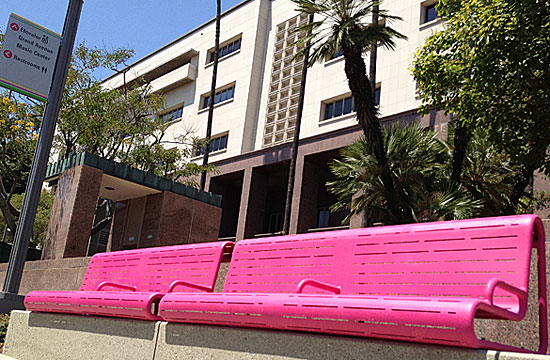


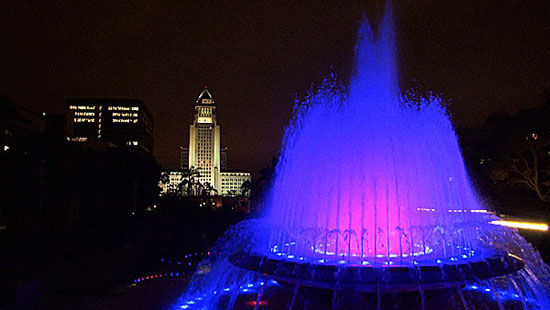
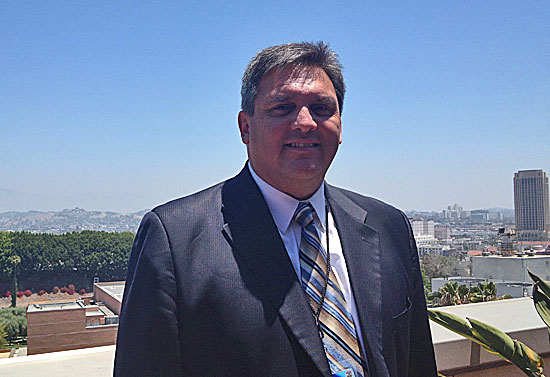
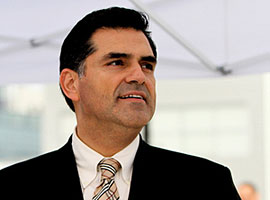








 405 bridge work causes a stink
405 bridge work causes a stink
